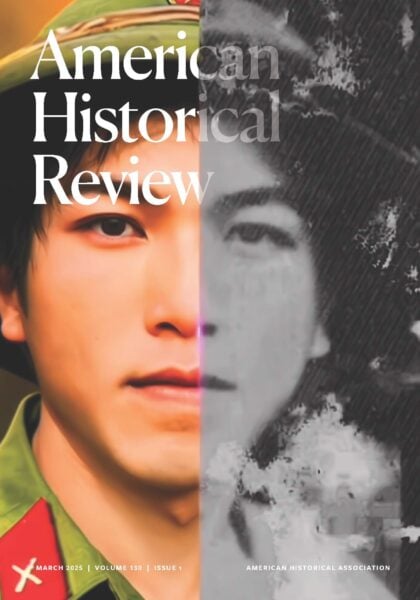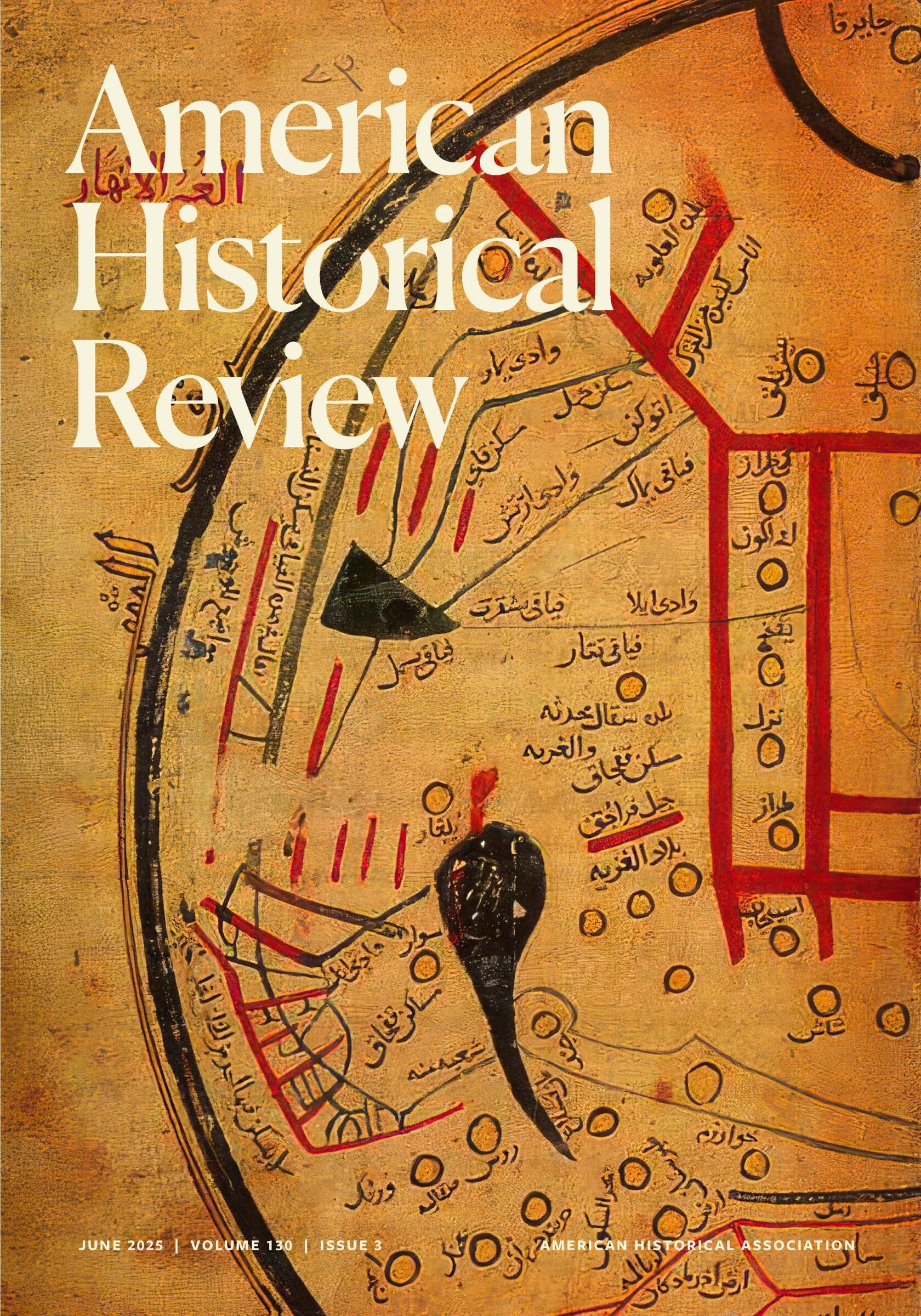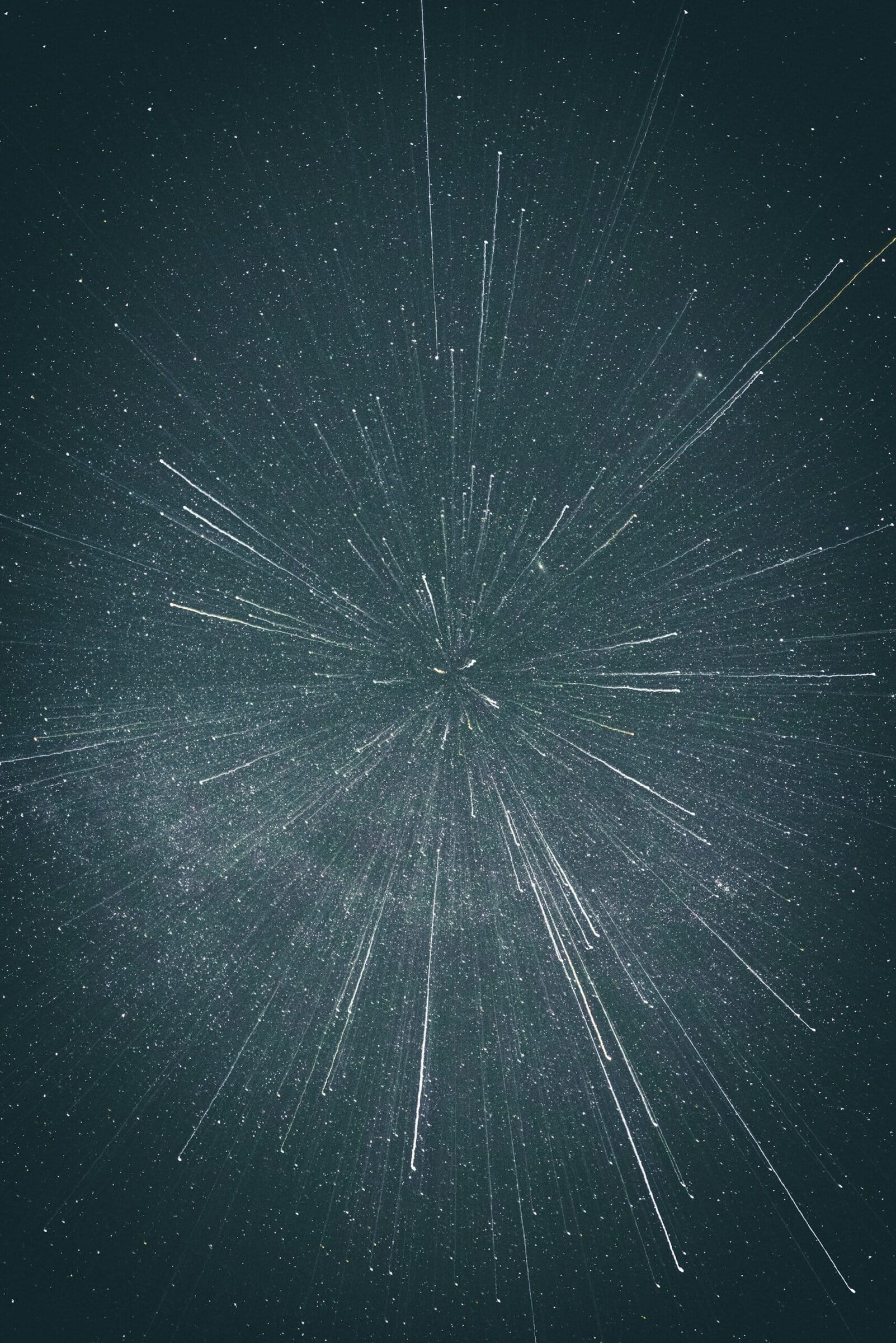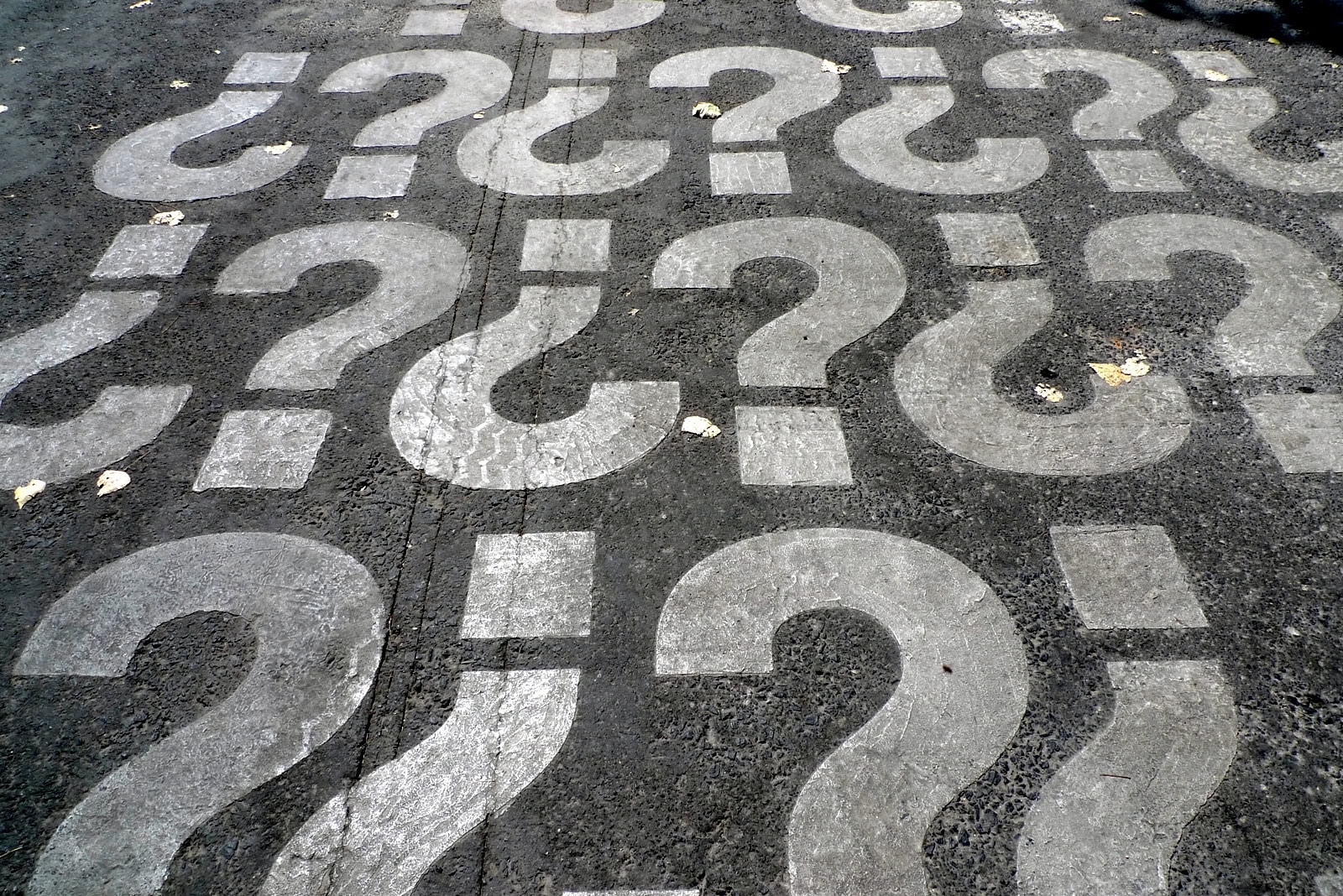The March 2025 issue of the American Historical Review begins the new year with contributions that feature histories of medicine, French medieval studies, and statistical practices, and includes collections on peace history, teaching the Vietnam War, and teaching with graphic narratives.
The issue opens with the AHA presidential address given by Thavolia Glymph (Duke Univ.). In “Paper Tracings in the Spectacularly Boisterous Archive of Slavery,” Glymph “pays homage not to silence but to the spectacular visibility” of the enslaved in the archive. Glymph looks to the 1831 will of Lucy Buchanan, a free Black woman in South Carolina. Her will is a “paper tracing” that speaks to the boisterous voices of the enslaved that “jostle” against the violence of slaveholders in the archive. Glymph writes, “Perhaps in our eagerness to condemn . . . archives in which we have too few documents written by enslaved people or which capture their perspective, we often miss or overlook enslaved people who are visible,” and so argues the presence of paper tracings like Buchanan’s will make up a loud, noisy archive to which historians would do well to listen.
The presence of paper tracings make up a loud, noisy archive to which historians would do well to listen.
Taylor M. Moore (Univ. of California, Santa Barbara) traces the scientific afterlife of the mummified body of Queen Henhenit in “Living Fossils.” Henhenit’s body and story held large implications for the practice of medicine and the production of race science in modern Egypt. The fictive linking of ancient and living women’s bodies and their use in scientific observation (largely without their consent) prompts a broader discussion of the human costs and centrality of women’s pelvic bones in efforts to solve the “mystery” of Egyptian racial origins and of the imperial biopolitics of motherhood. Moore maps the crossroads at which Henhenit sits in imperial, colonial, and national histories and reflects on the limitations of thinking of women’s bodies as material archives of history.
In “Patois of the Parishes,” Sara Ritchey (Univ. of Tennessee, Knoxville) examines the emergence of French medieval studies in the United States. She traces philologists’ efforts to “graft a medieval French heritage onto Louisiana soil” and project the “pure” French of white Creoles as distinguished from the “amputated” French associated with local communities such as freedpeople and Cajuns. Language and history served as tools of social power in postbellum Louisiana, and Ritchey argues that white Creole racialization of dialect—“patois” or nonstandard forms of French—as a vestige of the Middle Ages unsettles the field of French medieval studies and offers fresh possibilities for the meaning and makeup of “the medieval.”
Casey Marina Lurtz’s (Johns Hopkins Univ.) “Challenging Abstraction” encourages readers to consider historical statistics—specifically the “aberration, anomalies, and unruly data” present in them—as a space to see state-making as a multisided process. Lurtz examines agricultural data collected for Mexico’s pavilion at the 1900 Paris Exposition. While government officials assumed their carefully formatted columns and rows would represent productive agriculture as large-scale monoculture, she argues that the data made unruly by handwritten elements and additions instead shows a push from local municipalities to remake the representation of their realities and an on-the-ground engagement with state-making. Lurtz challenges historians to embrace a methodology for working with statistics that includes a return to the messy, handwritten original sources.
The History Lab opens with a forum marking the 50th anniversary of the end of the American war in Vietnam, in which ten historians reflect on the single most important work of historical scholarship for their and their students’ understanding of the war. Jana Lipman (Tulane Univ.), Edward Miller (Dartmouth Coll.), Jessica Chapman (Williams Coll.), S. R. Joey Long (National Univ. of Singapore), Robert Brigham (Vassar Coll.), Thy Phu (Univ. of Toronto), Sean Fear (Leeds Univ.), David Biggs (Univ. of California, Riverside), Wen-Qing Ngoei (Singapore Management Univ.), and Phi-Van Nguyễn (Univ. de Saint-Boniface) discuss memoirs, films, and photography alongside more traditional primary and secondary sources. The forum concludes with two unique contributions: a playlist created by Jason Gibbs (San Francisco Public Library) that introduces listeners to Vietnamese wartime soundscapes, and a gallery of Cambodian photographs from April 1975, many never before published, documenting the days before the Khmer Rouge took control of Phnom Penh.

A volunteer group in Vietnam, Team Lee restores, colorizes, and digitally enhances photographs of Vietnamese soldiers who were killed during the American war in Vietnam. Families bring what are often severely damaged photos, made when their loved ones were first inducted into the North Vietnamese army in the 1960s and 1970s, to Team Lee for restoration. This issue’s cover illustrates the work of one of those photographic restorations. Team Lee presents the retouched photographs to families in elaborate ceremonies, providing videos that show the transformation of the original photos into retouched versions that highlight the youthful ardor and revolutionary zeal of these fallen soldiers.
Questions of war and peace infuse a second forum in the Lab. “How to Make Peace with History While Making History with Peace” features essays by Charles F. Howlett (Molloy Univ.), Susanne Schregel (Univ. of Copenhagen), Christian Philip Peterson (Ferris State Univ.), Michael Goode (Utah Valley Univ.), John Smolenski (Univ. of California, Davis), Toshihiro Higuchi (Georgetown Univ.), David L. Hostetter (independent scholar), and Catherine Sameh (Univ. of California, Irvine) that explore the contours of the field of peace history and its future trajectories. The forum concludes with a collection of reflections on the relationship between peace scholarship and activism by Margaret Power (Illinois Inst. of Technology), Van Gosse (Franklin & Marshall Coll.), Lawrence S. Wittner (Univ. at Albany), David Cortright (Univ. of Notre Dame), Emily Rubino (Peace Action Fund), and Shelley E. Rose (Cleveland State Univ.).
“Graphic Narratives and History in the Americas” is the first in a multipart Lab project that brings together practitioners and scholars for conversations about the kinds of historical work graphic narratives can do and how historians might research, teach, and produce them. Led by Oleg Benesch (Univ. of York), Shaul Mitelpunkt (Univ. of York), and Charlotta Salmi (Queen Mary, Univ. of London), the project aims to create resources that scholars and teachers can use to learn about graphic histories from around the world, identify relevant comics archives in different regions, and gain insights on teaching with and about graphic narratives.
The History Lab and the AHR’s podcast, History in Focus, are engaged in an ongoing collaboration featuring the work of innovative historical podcasts. For this issue, History in Focus producer Daniel Story (Univ. of California, Santa Cruz) talks with Mona Nyambura Muchemi about the podcast AfriWetu.
The latest #AHRSyllabus module returns to Vietnam for a collaborative teaching initiative that foregrounds innovative uses of historical method in the classroom. “Teaching the History of the Vietnam Wars” features the work of high school teachers Elena Samkin, Vincent Pham, Duyen Tong, and Chris Bunin. Christian C. Lentz (Univ. of North Carolina at Chapel Hill) opens the module, and Andy Mink (Smithsonian Inst.) closes it with a reflection on the design of inquiry-based practices that foster historical thinking.
Two History Unclassified articles close the Lab. In “Snapshots of Loss, Learning, and Time in the Field,” Lily Pearl Balloffet (Univ. of California, Santa Cruz) reflects on her fieldwork in Argentina and a friend’s death during the COVID-19 pandemic to explore the socioemotional dimensions of conducting historical fieldwork. Lauren Mancia (Brooklyn Coll. and Graduate Center, CUNY), in “Strategies for Survival,” recounts her experiences working with a group of first-generation undergraduate students to mount an exhibition about women who taught classics and medieval history at Brooklyn College from 1930 to 1980, and reflects on the fate of the humanities today in US public universities.
This work is licensed under a Creative Commons Attribution-NonCommercial-NoDerivatives 4.0 International License. Attribution must provide author name, article title, Perspectives on History, date of publication, and a link to this page. This license applies only to the article, not to text or images used here by permission.


